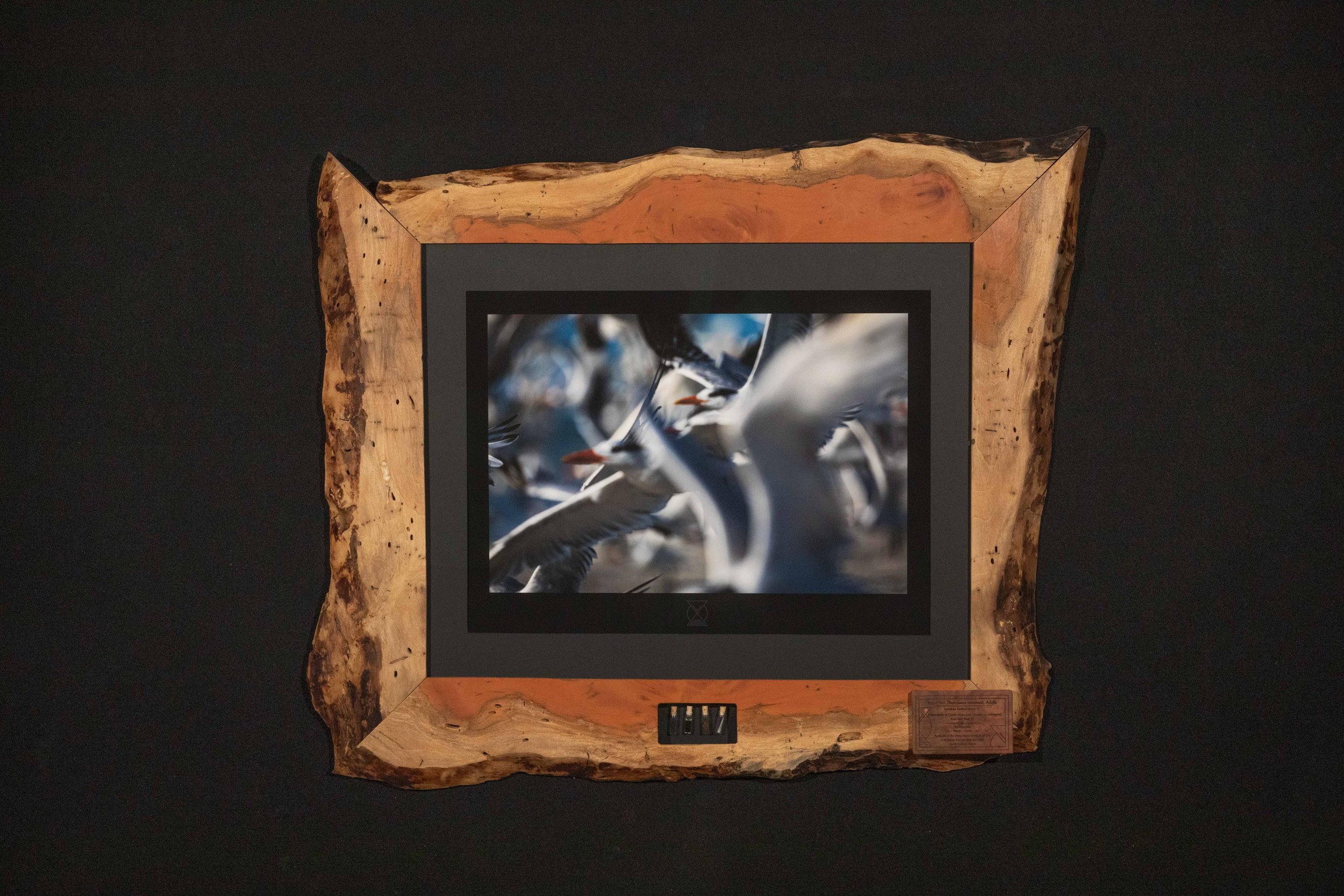Royal Terns - Sanibel, FL




Royal Terns - Sanibel, FL
Royal Terns (Thalasseus maximus), Immatures
Since I started taking photography seriously I have been enthralled with this type of scene. The chaos combined with the serenity of all of these birds rising together and taking off is quite the experience in person, and quite the moment to capture. This photo being out of focus helps to soften the insanity going on in the background as well. This photo was taken 10/14/19 at 7:53 am.
WeForest Donation: $320 (What is this?)
Print Number: 1/3
Print Size: 15 x 22.5
Total Dimensions: 35 x 41.5
Hanging equipment and certificate of authenticity included.
photograph
Royal Tern (Thalasseus maximus)
Royal Terns live along warm saltwater coasts, diving for small fish in the surf. They are very friendly birds, with but only with other seabirds. The Terns are only usually seen on islands that are devoid of many people or other animals. When nesting, terns gather in dense colonies. As chicks hatch, they leave their nests in the first day or so and gather together in groups called nurseries. The parents find their chicks in the raucous crowd by recognizing the calls of their offspring.
Like most terns, Royal Terns perform an act called a “dread” or “panic” in which the entire colony will rise up and silently fly over the colony site for 20 or so minutes. The reason for this behavior is totally unknown.
In the fall and winter, adult Royal Terns lose most of their black bold crown, exchanging it for a spotty white head and shaggy black hairdo similar to a typical human balding pattern.
Fun Fact: The oldest known Royal Tern was at least 30 years old.
location
Sanibel, FL
Sanibel Island is in southwestern Florida, off the coast of Fort Myers. The island seems to have been created, along with Captiva just north and connected by a short bridge, around 6,000 years ago. The first humans, the Calusa Indian Nation, arrived 3,500 years later.
Sanibel, the city, was formed in 1974. Home to Bailey Tract Wildlife Preserve, The J.N. “Ding” Darling Wildlife Refuge, Bowman’s Beach Park, and Tarpon Bay, all protected areas with abundant wildlife, preserving the natural areas has been a main focus of the city since its founding. Currently, around two-thirds of the island is fully protected from development.
It is also a sanctuary for shellers. Due to its geographic location and the currents that flow around the island, immense numbers of shells wash upon the shores.
Sanibel will always be a special place for me personally. I first visited Sanibel at a mere ten weeks old. From this place, I grew up learning about nature, animals, ecosystems, climate, and our home, planet Earth. When I was a child, we routinely saw Bobcats, 12-16 foot Alligators, and Spoonbill after Spoonbill after Spoonbill. Unfortunately, once abundant wildlife is harder to see unless you know where to look. Some of this change is due to development and the destruction of the habitat, mostly though, its due to our warming climate.
We tend to not think of this in the present moment, but some of these magnificent creatures that I photograph may not be around in another twenty years, much less 100. We must appreciate them while they are still with us.
FRAME
Cuban Mahogany (Swietenia mahagoni)
Cuban Mahogany is one of three species of Mahogany and it was originally the most widely used of the three. Nowadays, Honduran Mahogany is the much more prevalent wood and what most people would recognize as Mahogany. Native to the Carribbean, Cuban Mahogany’s northernmost range does include the far south of Florida, including the Keys. I happen to get all of my Cuban mahogany from a salvager in the Keys who removes the trees from construction sites before cutting it into slabs and drying it.
THE ELEMENTS
Fire, Water, Earth, and Air
In the display case in the bottom of the frame, four items are preserved glass vials. The items represent the elements: fire (wood charcoal), water (mineral oil), earth (soil), and air (a milkweed seed). I include these items in my work as a symbol of the interconnectedness of all life on earth, and as a reminder that humans must do better.
The Plaque
I engrave a wooden information plaque for each work. The plaque includes what the photograph is of, the location of the photograph, what type of wood the frame is made of and where I got the wood from. The plaques also explain what the vials are in each display case, and even state the meaning of my logo. The plaques are attached magnetically and can be removed to read or to store on the back of each frame if you prefer not to have it displayed on the front.

